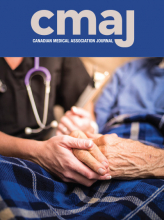Acute limb ischemia is a sudden decrease in limb perfusion that threatens limb viability
Ischemia requiring hospital admission is associated with an elevated risk of limb amputation, cardiovascular events and death. Around 20% of patients will require amputation.1 The incidence of acute limb ischemia is decreasing; however, 1-year mortality remains around 40%.2
An acutely painful limb is the most important symptom warranting investigation for acute limb ischemia
Patients with acute limb ischemia present with acute onset pain, paresthesias, pallor, poikilothermia, paralysis and pulselessness (the 6 Ps). It is uncommon for patients to have all 6 symptoms; the most common presentation is rest pain (71.3%).1,3 Assessment of the 6 Ps and ankle-brachial index (ABI) should be performed,4 and failure to perform an adequate clinical exam that includes the 6 Ps and ABI is associated with increased likelihood of major amputation and death.5
The initial investigation of choice is computed tomography (CT) angiography
Contrast-enhanced magnetic resonance imaging can substitute for CT angiography if absolute contraindications exist, with similar sensitivity and specificity. Nearly half of cases of acute limb ischemia are caused by emboli; hence, identification of atrial fibrillation with echocardiography is important.3
Systemic anticoagulation with intravenous unfractionated heparin is usually initiated at the time of diagnosis
Suboptimal anticoagulation is associated with need for additional interventions.3 Early contact with a vascular surgery centre is necessary to minimize ischemic time. Consultation and transfer should not be delayed by imaging.
Management decisions should be driven by clinical severity, and clot burden and distribution on imaging
Patients with loss of motor function have worse outcomes and require urgent treatment.6 Treatment should be started within hours and can involve embolectomy, open or endovascular revascularization or catheter-directed thrombolysis. Primary amputation may be required in advanced ischemia.3
Footnotes
Competing interests: Hans Rosenberg reports payment from the Canadian Medical Protective Association as a medicolegal expert and travel support from the Canadian Association of Emergency Physicians. No other competing interests were declared.
This article has been peer reviewed.
This is an Open Access article distributed in accordance with the terms of the Creative Commons Attribution (CC BY-NC-ND 4.0) licence, which permits use, distribution and reproduction in any medium, provided that the original publication is properly cited, the use is noncommercial (i.e., research or educational use), and no modifications or adaptations are made. See: https://creativecommons.org/licenses/by-nc-nd/4.0/











